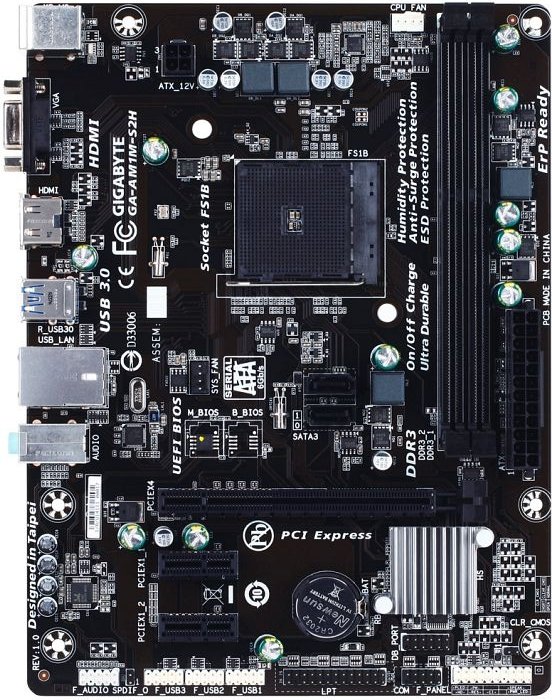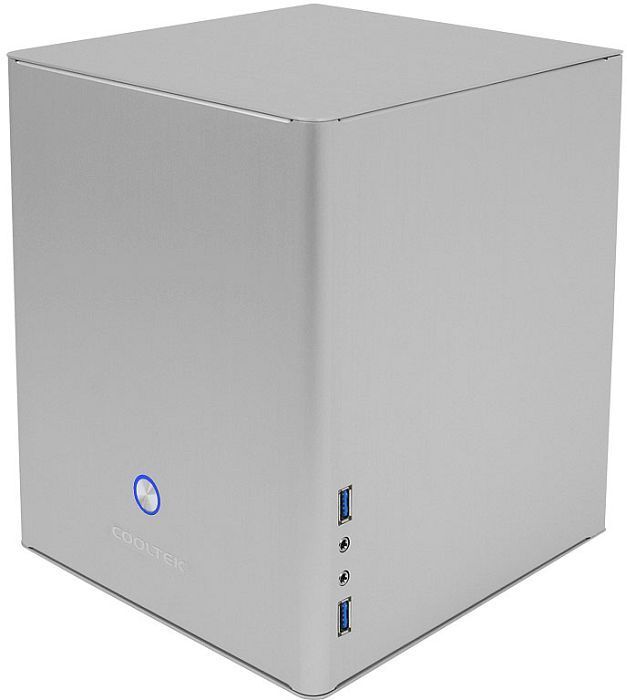AMD’s AM1 platform is not meant for gamers. It features a tiny 128-core iGPU and there’s no dual graphics support, so you can’t use the on-die GPU alongside a cheap discrete Radeon. It offers plenty of performance for office users and since it's essentially a socketed Kabini, it's dirt cheap, too.
However, the platform is dirt cheap and flexible, so in theory it could be used for a small gaming box or one of those Steam Machine things. PC Perspective ran a few interesting benchmarks with a Maxwell-based Geforce GTX 750 Ti mated to an Athlon 5350. The results may come as a surprise – in some titles the tiny Athlon does a pretty good job.
Massive performance gains on a 150W rig
The end result was a gaming rig, if you can call it that, with a price tag of $440 and a power draw of up to 150W. PC Perspectives went all out, stuffing the rig with a Cooler Master GX 450W PSU, WD Caviar Blue 1TB hard drive and two 4GB Kingston HyperX DDR3-1600 modules. Gigabyte’s AM1M-S2H mATX board was employed.
They pitted the system against a Core i7-3960X platform, which sounds a bit like Estonia trying to invade Russia, as the Core i7-3960X is a $999 six-core based on the Sandy Bridge-E core.

The AM1 rig was substantially slower, but the gap wasn’t too wide. In most games it delivered 10-15FPS less than the Sandy Bridge-E system. The AM1 with Maxwell graphics managed to match the big rig in Battlefield 4 and Crysis 3, delivering 29.9 and 15.3FPS respectively. In Bioshock Infinite the Intel rig delivered 61.7FPS, while AM1 managed 50.1FPS.
In Civilization 5 the difference was much bigger, 49.3FPS vs. 31FPS. CPU bound games like Civilization are not a great match for AMD’s tiny AM1 parts. However, in some titles it performs admirably.
Is it really worth the trouble?
Of course, we cannot endorse the AM1 platform for core gamers, it just wasn’t designed for anything too demanding. If you want a tiny gaming rig, you’re probably better off with a FM2+ platform and an entry level Richland (or upcoming Kaveri parts).
There are a few caveats regarding PC Perspective’s choice of hardware. The reviewers admit that the AM1 platform used in the tests was overkill. The GTX 750 Ti is a tad too powerful for it, while at the same time it is too slow for the Sandy Bridge-E rig. Few consumers would actually buy such a combo, but the reviewers were testing what they had on hand.
A better match would have been the 55W GTX 750 sans Ti suffix, or the even cheaper Radeon R7 240 (Oland Pro), rated at 50W. The R7 250 (Oland XT) is another alternative, but it can consume up to 75W.

With an SSD instead of a 3.5-inch drive, a 50W-55W GPU, you should be able to get away with an even smaller chassis and a smaller PSU, even a passive one. The system can end up cheaper, too, especially if you recycle some old bits (namely DDR3 and storage) and use a much cheaper card like the R7 240. There are a number of stylish ITX chassis with PCIe slots out there and these aluminium cubes aren’t as pricey as you think. Many will also let you recycle an old ATX PSU.
Granted, you won’t see much in the way of performance, but for many casual gamers it will suffice. An AM1 rig with cheap discrete graphics could make a great living room PC, or maybe even an entry-level Steam Machine.




